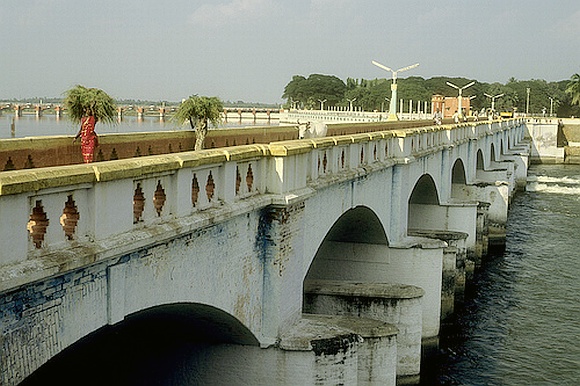The flame over the age-old Mullaperiyar dam row has once again reached Parliament's doorsteps. None of the two conflicting parties -- namely governments in Tamil Nadu and Kerala -- seem to be in a mood to back off, and the controversy is set to become an additional headache for the already cornered UPA government at the Centre. Rediif.com tries to explain the different contours of the issue.
Where is the Mullaperiyar dam, and when was it constructed?
The Mullaperiyar Dam was constructed by the British during 1887-1895 across Periyar River in the then Travancore state (now Kerala) territory. The dam, with full reservoir level of 152 ft. provides for diversion of water from the reservoir through a tunnel to Vaigai basin in Tamil Nadu for irrigation benefits.
A 999-year lease was made, and accordingly, the Tamil Nadu government has been operating the dam. The Periyar power station in TN produces hydro-electric power from these waters and distributes that electricity in the state.
Who benefited from the dam?
Apart from providing drinking water to the people of Madurai, Theni, Sivaganga and Ramanathapuram, the diverted waters helped irrigate about 80,000 hectares of parched land in these districts.
...
FAQ: What is the Mullaperiyar dam issue?
Image: A view of the Mullaperiyar damSo what is the problem now?
The dam is one of the oldest dam in service in the world, at 105 years. The average life-span of a well-built and well-designed dam is considered to be 50-60 years by experts. When the British built the dam, they expected its life span to be around 2,000 years.
But didn't the British build it?
The Mullaperiyar Dam was made using old technology, and not based on the modern parameters for design of dams. In this case, much of the building material used in the construction has been leached out, by wear and tear.
But then again, in 1930s, Tamil Nadu engineers bored 80 holes in the dam and injected 40 tonne of cement solution to plug seepage. Again in 1933, grouting technology was used to strengthen the dam. In 1960, 502 tonne of cement solution was injected. All this was done without any outside prodding.
Click NEXT to read it further...
FAQ: What is the Mullaperiyar dam issue?
Image: The Kallanai damSo, the dam is virtually safe?
Well, after a few minor earthquakes in 1979 in regions surrounding the dam, security issues were raised over its security. Since then, both the Kerala and TN governments have been at loggerheads over the security issue.
Later, experts from Indian Institute of Technology also examined the dam, and mentioned that the dam will not withstand an earthquake.
What does the TN government have to say about it?
The TN government refutes allegations that age has withered the dam. There are arguments that if the world's oldest Kallanai dam (built in the second century AD) in Srirangam in Tiruchirapali district is still functional and continues to irrigate about 4,000 sqkm, why can't the Mullaperiyar be as well.
So, where do the two governments stand?
The Kerala government's contention is that in case the dam breaks, the three dams downstream -- Idukki, Cheruthoni and Kolamavu – will not be able to withhold the pressure, which will put the lives of 3.5 million people in the state.
On the other hand, the TN government maintains that if the Mullaperiyar is demolished, it will create water scarcity in five districts of the state, leading to a draught in the region.
...
FAQ: What is the Mullaperiyar dam issue?
Image: (Left) Kerala Chief minister Oomen Chandy (Right) Tamil Nadu Chief Minister J JayalalithaaHave they tried no middle path?
Since 1978, Kerala has been demanding the construction of a new dam. As a reaction to these demands, the TN government brought the water level down from 152ft to 132ft to allay the fears. They agreed upon restoring the water levels once the strengthening works were over. But that matter went in court. In 2006, the water levels were restored.
TN has objection on the idea of Kerala constructing a new dam, because it would mean it that the 999-year lease would be void, and it would have to surrender the 8,000 acres of land under its control to Kerala. It also accuses the Kerala government of whipping up a fear wave among its people about the safety of Mullaperiyar.
So is there a solution in the near future?
The matter is still being debated.





article